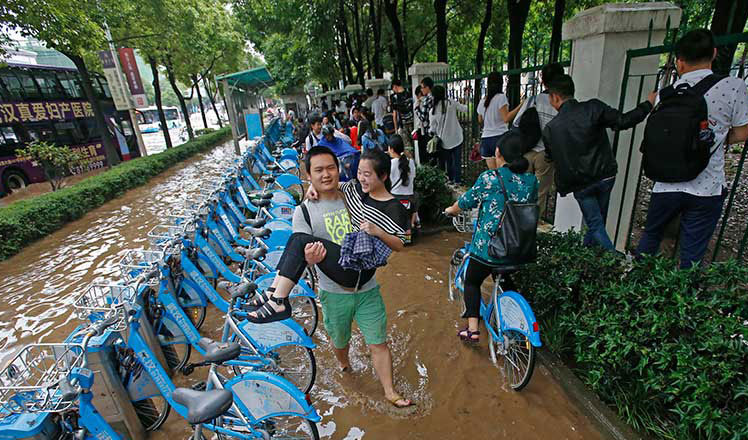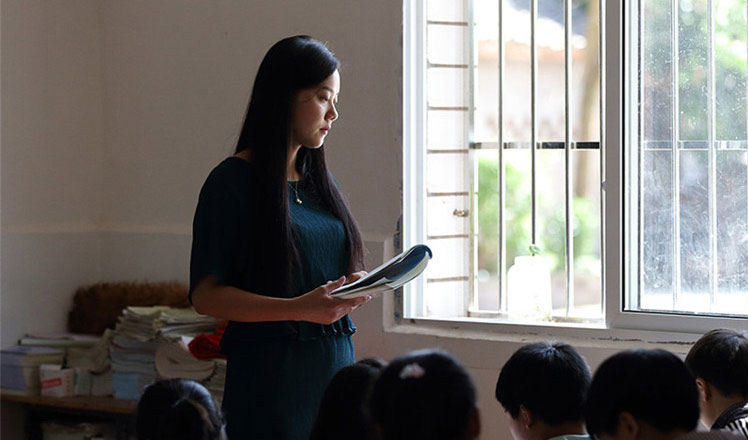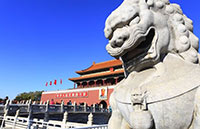Chinese-Europe plans can learn lessons from Swiss tunnel project
Updated: 2016-06-02 23:56
By Fu Jing(chinadaily.com.cn)
|
||||||||
Non-European Union member Switzerland inspired its European neighbors on June 1st by announcing the completion of a 57-km-long rail tunnel, the longest one in the world to date, underneath the Swiss Alps after 17 years of assiduous drilling.
Very similar to the Channel Tunnel linking Great Britain and mainland Europe, and thus Asia, mountainous landlocked Switzerland is expected to gain tremendous benefits from the multi-billion euro Gotthard Base Tunnel, which will be used by freight and passenger trains to travel to and from Italy later this year.
Leading European political figures such as German Chancellor Angela Merkel and France's President Francois Hollande, preoccupied by the continuing headaches of terrorism, refugee influx and economic stagnation, took time out to celebrate the engineering miracle with Swiss leaders that day.
In the EU, transforming such time-consuming engineering work from grand vision idea into reality is not easy, with various constraints ranging from complicated environmental impact assessments, conflicting interests of different political parties to the overall inefficiency of the approval process.
Two examples can illustrate the problem.
In Germany, the local authority of the city of Stutgartt decided to invest about six billion euros in 2010 to revive its main train station area into a business hub, but then it failed when more than half the local population voted against it in a referendum.
In Belgium, a businessman planned to convert a building he purchased in the downtown Brussels area into a hotel but it will take him about two years to complete the decoration work alone.
Such hurdles have nipped in the bud many such business opportunities in the EU, though it desperately needs investments to rekindle various economies and create jobs.
It is up to the European Union to take institutional action to make changes to allow the challenges to be faced squarely. In this sense, the completion of this Swiss project has offered well-timed food for thought, and highlighted the relationship between China and EU into the context.
China and the EU have been in negotiations to set up a joint fund in order to invest in each other's mega-projects. Most importantly, EU member countries are eager to launch big projects to boost the region's economy.
For decades, China has accumulated tremendous engineering expertise since constructing the Three-Gorges Hydropower Plant, long pipelines to transport oil and natural gas from the western parts of China to the east and south, as well as and hundreds of thousands of kilometers of railways and highways. China has the capacity to produce the necessary machinery.
And China has surplus capital.
For example, the Czech Republic, another landlocked country in Europe, has a strong intention to cooperate with China, which could help this central European country connect with the rest of Europe by digging cannels and building an aviation hub.
Coincidentally, Switzerland recently became an observer to the 16+1 framework between the Central and East Europe and China, under which both sides have already started infrastructural cooperation.
By making good use of its experiences gathered in the tunnel project, Switzerland could join China to provide timely and valuable input to help realize fast development in the sixteen countries in East and Central Europe.
Moreover, such cooperation would be useful in improving the infrastructures in West Europe.
The United Kingdom is already discussing with China high-speed railway and nuclear power station projects.
Such cooperation may need a final signal from European Union headquarters. Apart from speeding up approval procedure, it is necessary for the European Union to rethink what mega-projects in Eurasia continent are necessary and how to link them with regional economic recovery and integration.
Additionally, both China and European Union should be aware of such a bigger picture when considering future infrastructure and engineering projects, when they talk about setting up joint fund aimed at improving connectivity.
In that context, the admiration of the Swiss project's success by Europe's main leaders is meaningful.
To contact the author: fujing@chinadaily.com.cn
- Swiss declare Alps tamed as Gotthard rail tunnel opens
- China urges Japan to properly settle Chinese forced laborers issue
- Searching for remains of Dead Sea Scrolls
- China-US relations shouldn't be hijacked by S. China Sea issue
- To cool you off: The fountain in Washington Square Park
- Americans warned about terror risk this summer

 Performers wanted for Shanghai Disney park
Performers wanted for Shanghai Disney park
 New law protects ancient villages in Southwest China's Lhasa
New law protects ancient villages in Southwest China's Lhasa
 Kids with HIV in Shanxi's Red Ribbon School
Kids with HIV in Shanxi's Red Ribbon School
 Heavy rain turns Wuhan into 'seaside' city
Heavy rain turns Wuhan into 'seaside' city
 Photos: Little royals on the Children's Day
Photos: Little royals on the Children's Day
 Pure love: Chinese 'little prince'and his fox
Pure love: Chinese 'little prince'and his fox
 Then and now: Recreating that child-like smile
Then and now: Recreating that child-like smile
 Young teacher's heartfelt love for the students
Young teacher's heartfelt love for the students
Most Viewed
Editor's Picks

|

|

|

|

|

|
Today's Top News
Chinese State Councilor Yang Jiechi to meet Kerry
Chinese stocks surge on back of MSCI rumors
Liang avoids jail in shooting death
China's finance minister addresses ratings downgrade
Duke alumni visit Chinese Embassy
Marriott unlikely to top Anbang offer for Starwood: Observers
Chinese biopharma debuts on Nasdaq
What ends Jeb Bush's White House hopes
US Weekly

|

|









